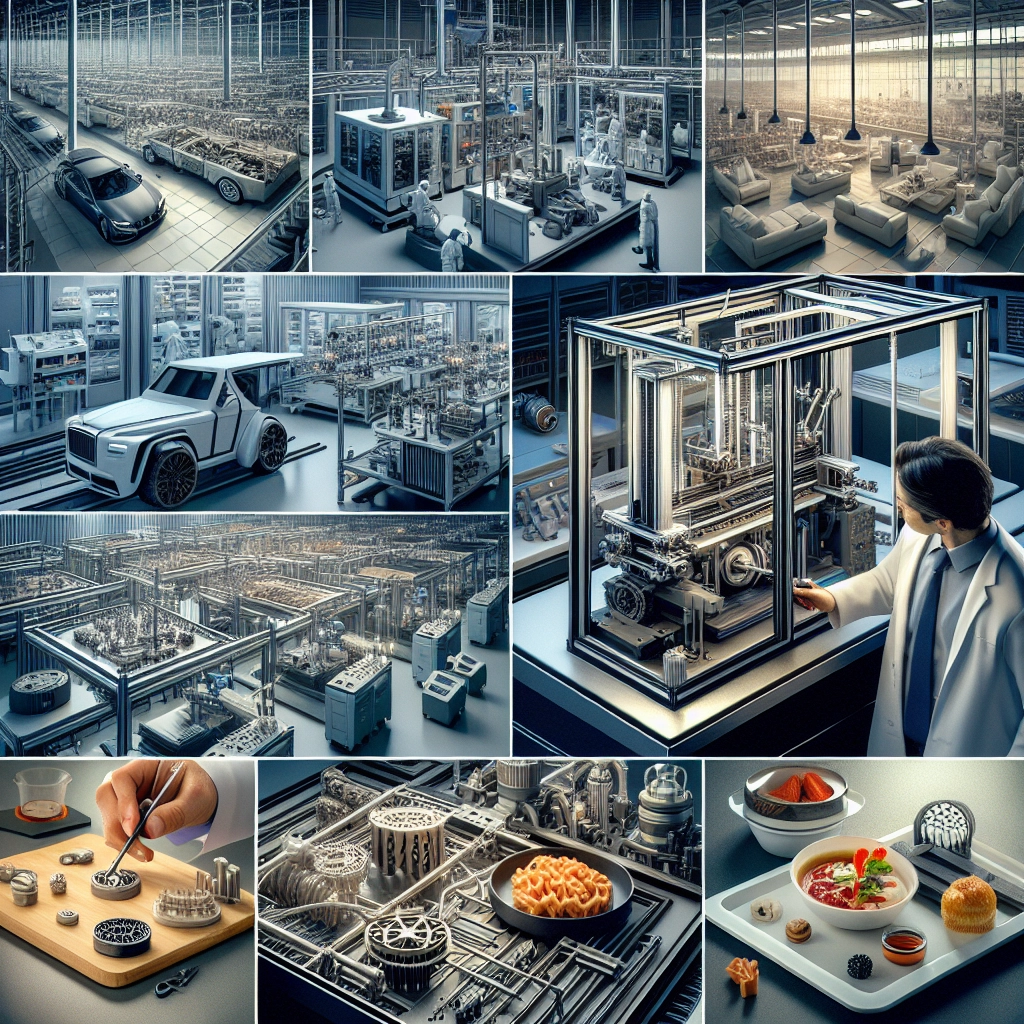Innovative Uses of 3D Printers in Various Industries
The evolution of 3D printing technology has dramatically transformed the way we think about manufacturing, design, and even healthcare. What was once a niche hobby for tech enthusiasts and designers has burgeoned into a multifaceted industry, shaping various sectors and introducing creative solutions. From aerospace to healthcare and everything in between, let’s explore some innovative uses of 3D printers that are steering industries in exciting new directions.
Aerospace and Automotive
In the aerospace and automotive industries, weight savings and efficiency are paramount. Companies like Boeing and Airbus are harnessing 3D printing to produce lightweight components that help reduce fuel consumption. For instance, 3D-printed parts can be made with intricate designs that would be impossible to achieve through traditional manufacturing methods. Additionally, this technology allows for rapid prototyping, meaning engineers can test and iterate their designs much faster than before. Imagine needing a part urgently for a jet engine; with 3D printing, you can create it on-site, eliminating long wait times and reducing logistics costs.
The automotive industry, too, is benefitting from these advancements. Companies like Ford and Volkswagen are using 3D printing for everything from prototypes to end-use parts. For example, Ford has developed 3D-printed car parts that allow for customization and faster production. The technology also minimizes waste during production because parts are built layer by layer rather than cut from larger pieces of material.
Healthcare
In the healthcare field, 3D printing is nothing short of revolutionary. Surgeons are utilizing 3D-printed models of patients’ anatomy to practice and plan complex surgeries, leading to improved outcomes and reduced operation times. By combining advanced imaging with 3D printing technology, physicians can create highly accurate replicas of organs or bones, assisting in preoperative assessments and surgical simulations.
Moreover, personalized medical devices like prosthetics and dental implants are increasingly being created via 3D printing. These devices can be customized to fit an individual’s unique anatomy, significantly enhancing comfort and functionality. Notable advancements include bio-printing, where living cells are used to create tissues or even organs, holding the promise of reducing organ transplant waiting lists.
Fashion and Wearable Tech
Fashion might not be the first industry that comes to mind when thinking about 3D printing, but it’s certainly making its mark. Designers are experimenting with 3D-printed fabrics and accessories that can’t be created through traditional means. For example, the brand Nervous System has created 3D-printed garments that respond to the body’s movements, offering a blend of art, technology, and practicality.
Wearable tech is another exciting area where 3D printing is gaining traction. Custom-fit wearables, such as fitness trackers or VR headsets, can be developed rapidly and tailored to user specifications. This allows for both improved comfort and enhanced functionality, as the design can account for an individual’s unique requirements from the outset.
Food Industry
Believe it or not, 3D printers are even making waves in the food industry! Culinary artists are using 3D printing technology to create intricate designs and shapes that were once deemed too complex to achieve. Companies like Foodini are at the forefront of this movement by developing printers that can help create everything from chocolate sculptures to pasta—all made from fresh ingredients.
The potential for customized nutrition is another thrilling aspect. Imagine a scenario where you can print a meal that meets your dietary preferences or nutritional needs on the spot. While still in its infancy, this innovative application of 3D printing may revolutionize how we prepare and consume food in the future.
Architecture and Construction
The architectural landscape has also been impacted significantly by 3D printing. Companies are experimenting with "printing" entire buildings using large-scale 3D printers. This technology not only accelerates the construction process but also reduces material waste. ICON, for example, has made headlines by printing affordable housing structures in record time, providing much-needed solutions to housing shortages.
With the added option to create highly customizable designs, 3D printing in construction allows architects to bring their visions to life like never before. The ability to create complex geometries and forms can lead to more sustainable building practices and innovative spaces.
As we continue to embrace the possibilities of 3D printing, it’s clear that this technology is not just a trend—it’s a transformative force across various industries. The ability to create tailored solutions quickly and efficiently opens up endless possibilities, challenging our perceptions of what can be designed and produced. With each new application, we’re reminded that innovation knows no bounds. So, whether you’re an entrepreneur, a designer, an engineer, or just a curious onlooker, the world of 3D printing is one worth keeping an eye on as it continues to evolve and inspire.

